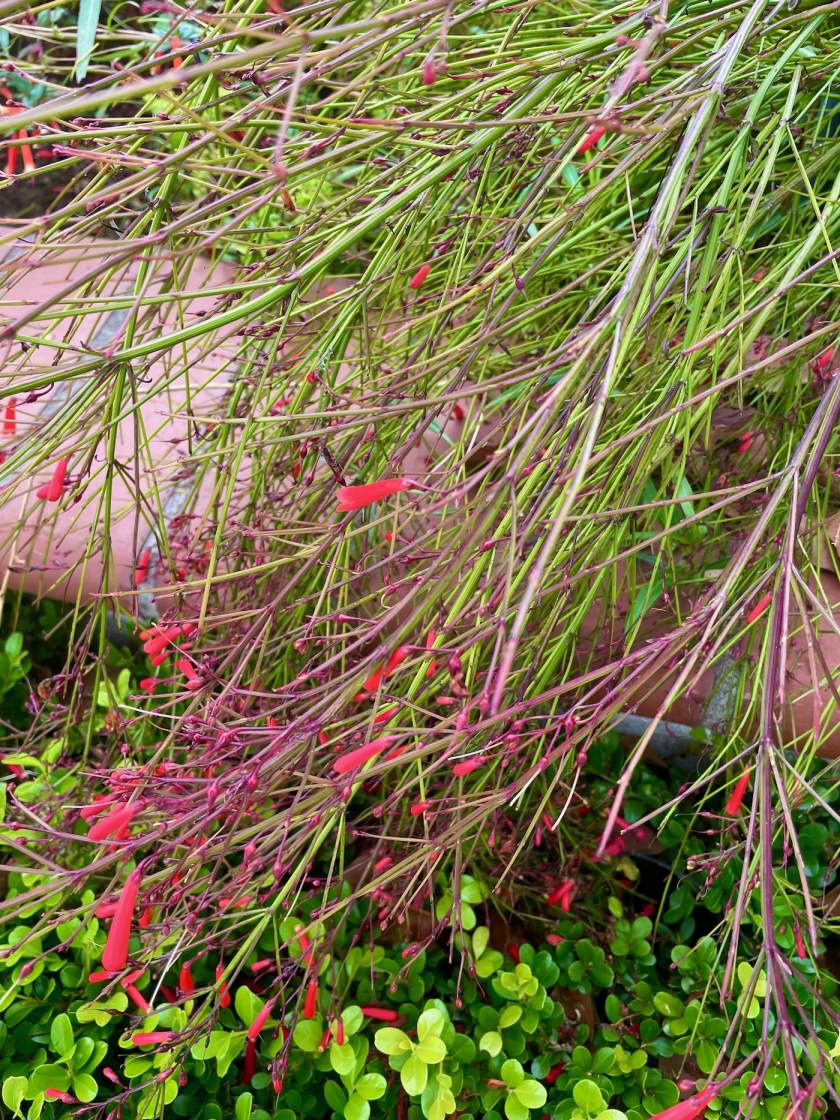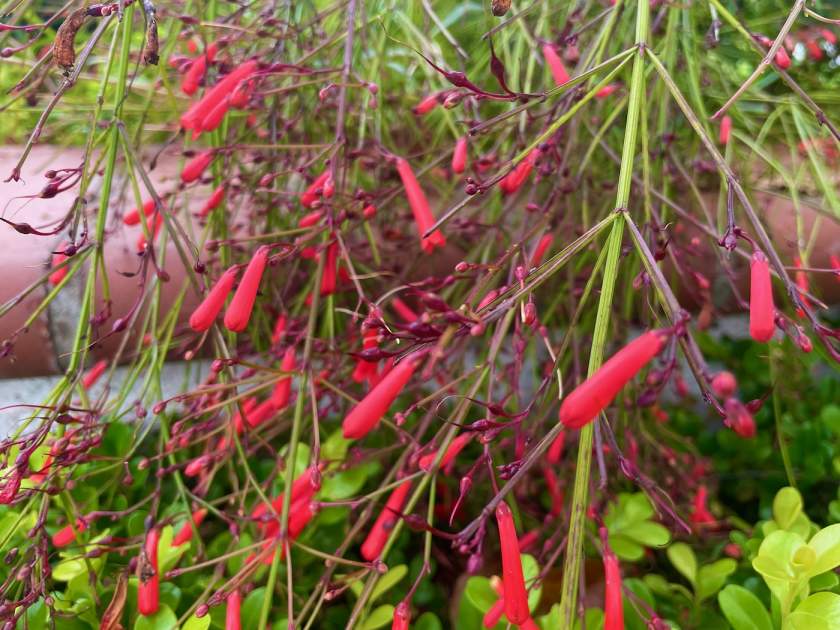Coral Plant or Russelia equisetiformis: A Dazzling Hummingbird Magnet for Warm Climate Gardens
Russelia equisetiformis, commonly known as Coral Plant or Fountainbush, belongs to the family Plantaginaceae. Its specific epithet, “equisetiformis,” refers to its resemblance to the horsetail plant (genus Equisetum), although they are not closely related. This striking multi-branching plant is native to Mexico and boasts vibrant red tubular flowers that attract hummingbirds and butterflies. Its arching branches, lush foliage, and captivating blooms make it a popular choice for temperate gardens, window boxes, pots, and hanging planters.
Graceful Form and Colorful Flowers Russelia equisetiformis is a deciduous shrub that grows up to 2 to 4 feet in height and spreads 3 to 5 feet wide. The plant showcases long, weeping branches that create a fountain-like mound, adding grace and beauty to any landscape. Its bright green stems and tiny oval leaves form an elegant backdrop for the abundance of small, decumbent red flowers. In tropical and subtropical climates, this Fountainbush can bloom throughout the year, delighting gardeners with its non-stop display of scarlet blossoms.
The Hummingbird and Butterfly Haven One of the most captivating features of the Coral Plant is its role as a nectar-rich haven for hummingbirds and butterflies. The alluring tubular flowers serve as a delightful food source for these flying visitors, making it a delightful addition to any wildlife-friendly garden.
Cultivating Russelia equisetiformis:
Sunlight: Russelia equisetiformis thrives in full sun, but it can also tolerate partial shade.
Watering: Maintain medium moisture levels in well-drained soils. Allow the soil to dry out between irrigations.
Soil: The plant is adaptable to a wide range of soil conditions, making it suitable for various garden settings. It can grow in both moist soils at the periphery of ponds or water gardens and well-drained average soils.
Pest and Disease: Russelia equisetiformis is generally a low-maintenance plant with no significant pest or disease issues.
Propagation: The plant can be propagated through stem cuttings, and cascading stems that touch the ground may root, leading to new plants that can be potted separately.
Versatile Garden Addition
With its cascading branches and stunning red flowers, Russelia equisetiformis is a versatile addition to any warm climate garden. It can be used as an accent plant, part of a mass planting, or in containers and hanging baskets. Its adaptability to various conditions and its heat and drought tolerance make it a resilient and attractive choice for gardeners.
Winter Care and Overwintering
Russelia equisetiformis is winter hardy in USDA Zones 9-11. In colder climates, where the temperatures drop below its tolerance range, it can be overwintered as a houseplant in a warm sunroom or kept in a dormant state in a cool, dark, and dry location. For those who wish to enjoy its vibrant blooms throughout winter, proper siting and care will encourage the plant to continue blooming even during colder months.
Russelia equisetiformis, with its captivating beauty and appeal to hummingbirds and butterflies, is an excellent choice for gardeners seeking a vibrant and dynamic addition to their outdoor spaces. Its striking form, dazzling red flowers, and ease of care make it a must-have for gardens in warm climates. Embrace the allure of this fountain-like shrub and create a haven for wildlife and a stunning focal point in your garden.





